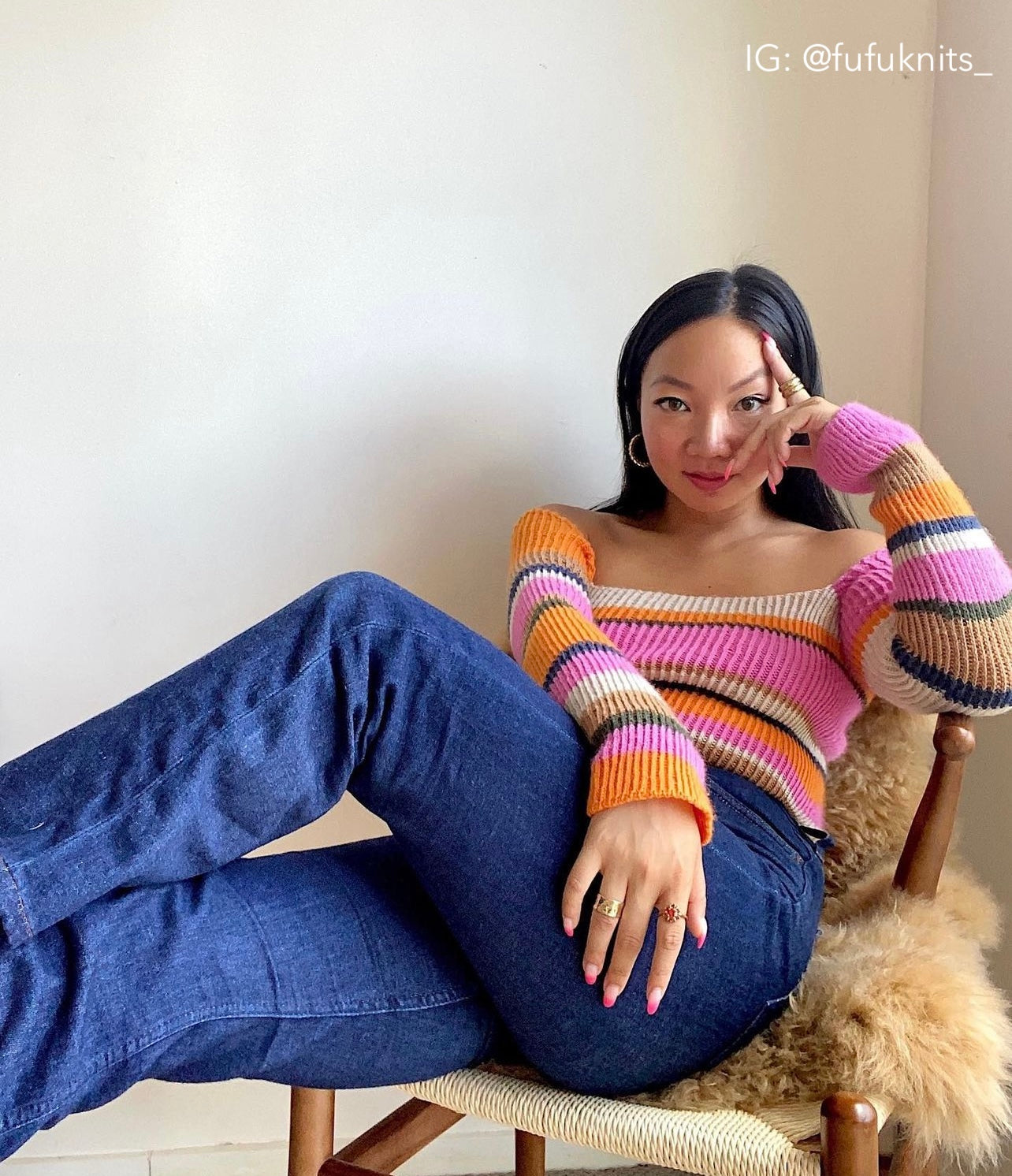Unlucky Knits
the Love Top
the Love Top
Couldn't load pickup availability
THIS ITEM IS A DIGITAL KNITTING PATTERN
When purchasing this item, you will receive a link via e-mail, allowing you to download the knitting pattern as a .pdf file.
View full details









INFO
SIZING
SIZES
XXS (XS) S (M) L (XL) 2XL (3XL) 4XL (5XL)
This pattern also offers 3 different ways to fit the garment to different body types!
MEASUREMENTS
Your bust circumference in cm: 74-79 (80-84) 85-90 (91-99) 100-109 (110-119) 120-129 (130-139) 140-149 (150-159) cm
This top has a negative ease.
Choose a size to knit based on your measurements, and the garment will stretch to fit you as intended.
CUSTOMIZING
Not all bodies look alike - thankfully! So, the intended fit of a garment might not fit everyone equally well. Unlucky Knits patterns always include a "Customization Guide" with tips on how to adapt the garment to fit you perfectly.
MATERIALS NEEDED
NEEDLES AND WIRES
Circular needles 3.5 mm [US 4]
Wires length 40, 60 and 80/100 cm
(Length includes knitting needles)
Double pointed needles 3.5 mm [US 4] - or use magic loop on circular needles
Wool needle for weaving ends
YARN
Preferred type: Wool
Meterage: 210 meters pr. 50 grams
Amount needed for FIT 1: 225 (250) 250 (300) 300 (350) 400 (450) 450 (500) grams
Amount needed for FIT 2: 50-100 g extra
Amount needed for FIT 3: 100-150 g extra
YARN ALTERNATIVES
Recommended:
The recommended yarn for the Love Top is pure wool.
The best alternative:
Merino wool should also work perfectly for this pattern!
Another alternative:
You can use acrylic yarn for this project, although the look might turn out slightly different.
I recommend using a yarn with mixed acrylic and natural fibres, such as most sock yarns.
DIFFICULTY
DIFFICULTY: 4/5
This pattern contains quite a few advanced techniques, such as twisted rib, German Short Rows and italian bind-off.
It offers detailed explanations of the entire process, and is generally clear and easily legible.
The pattern does contain abbreviations to certain words (k = knit, p = purl etc.) with a guide explaining the meaning of every abbreviation.
You can always check out the Unlucky Knits guides, if you need help along the way.
Please keep in mind that what some find difficult, you might find easy - and vice versa. The stated difficulty is an estimation based on the techniques needed and feedback from testknitters.










